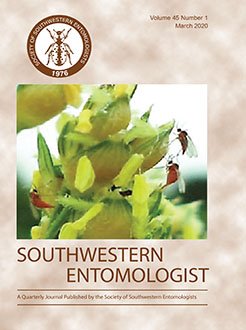Red spider mite, Tetranychus merganser Boudreaux (Acari: Tetranychidae), has increased its host plants and causes severe damage and defoliation. Control of pest mites depends mostly on the use of agrochemicals. Mite-resistant plants are needed. Piquin chili, Capsicum annuum var. glabriusculum (Dunal) Heiser & Pickersgill, is a wild species of chili pepper and a major source of phytochemical compounds such as phenolic compounds, flavonoids, capsaicinoids, carotenoids, tocopherols, ascorbic acid, and volatile compounds. The aim of this study was to evaluate antibiosis and antixenosis as resistance mechanisms in three accessions (BGH-425, BGH-426, and Ch) of piquin chili in laboratory and greenhouse conditions. In the laboratory, antixenosis was evaluated by non-preference for oviposition, antibiosis by infinitesimal rate of increase (r) and finite rate of increase (λ), and repellency by percentage of mites killed. In the greenhouse, antibiosis was evaluated by r and λ. Preference for the lower or upper leaf surface was evaluated. Antixenosis, antibiosis, and repellency were observed in the three piquin chili accessions. In the laboratory, females survival was 60, 80, 80 and 93.33% on BGH-426, BGH-425, Ch and bean (Phaseolus vulgaris L.), respectively. The lower r was observed on Ch accession (0.3857 day-1) and the higher on bean (0.6105 day-1). The λ ranged from 1.47 on Ch to 1.84 on bean. In the greehouse, the highest and the lowest values of the r y λ were obtained at bean (0.6014 day-1 and 1.82) and Ch accession (0.3591 day-1 and 1.43), respectively. Red spider mite preferred to colonize the lower leaf surface of the three piquin chilis and bean. The three accessions of piquin chili were most resistant to T. merganser.
How to translate text using browser tools
31 March 2020
Resistance of Wild Chili (Capsicum annuum L. var. Glabriusculum) to Tetranychus merganser Boudreaux
Julio C. Chacón-Hernández,
Salvador Ordaz-Silva,
Epifanio Mireles-Rodriguez,
Mario Rocandio-Rodríguez,
Imelda V. López-Sánchez,
Rapucel T. Q. Heinz-Castro,
Francisco Reyes-Zepeda,
Sergio Castro-Nava
ACCESS THE FULL ARTICLE

Southwestern Entomologist
Vol. 45 • No. 1
March 2020
Vol. 45 • No. 1
March 2020




